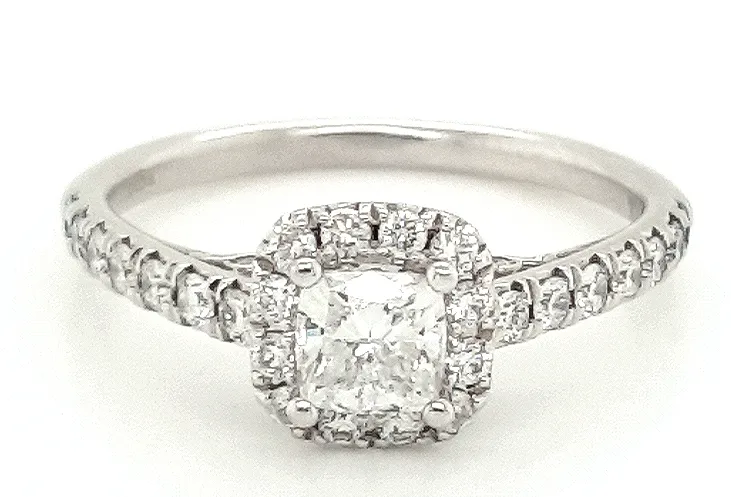
A Guide to Different Diamond Cuts - Part 2
Part 2 of our guide to the different diamond cuts will cover 5 different shapes including Marquise, Cushion, Radiant, Asscher and Heart. Each of these shapes has its own beautiful qualities, making each a little bit more unique. Hopefully the following information will help make your decision to buy a diamond a little bit easier. You will see in this guide (and part 1) that the word “Cut” is used a lot, it is important to remember the this term should not be confused with the more commonly used term of diamond cut (which describes how well the diamond has been polished from the raw material). With that said have a look at the following 5 diamond shapes.
Marquise
Wearing a Marquise cut diamond on your hand is like wearing little slice of royalty, given its regal heritage. Legend has it that this cut was developed in the 1740s, and was named for the Marquise de Pompadour, a mistress of King Louis XV, because its outline resembled the shape of her mouth. Whether this is true or not it is a shape that has withstood the test of time and is popular for someone looking for a stone that is uniquely shaped, with a bright shine and an ability to make the finger look thinner and longer. Another great point about this shape is that its elongated body can make its appearance larger than its actual carat weight. Although not a traditional cut it is a perfect shape for someone looking for a little bit of drama in their jewellery. An example of a marquise cut diamond is:
Ring Ref: 8042
Cushion
The shape of a cushion cut diamond is exactly as its name suggests, in the shape of a cushion or pillow, generally in a square or rectangular shape with beautifully rounded corners. It has slightly more facets than a round brilliant or princess cut stone and because of these extra facets it can disperse more light in the stone, efficiently hiding inclusions. The cushion cut engagement ring is timeless. It looks contemporary, but in an antique-style setting it speaks of the romantic past. There may be the dilemma of trying to choose between the cushion cut and the princess cut diamonds, and there is no right answer in which one to choose. The cushion cut has the rounded corners, but the princess cut stones generally tend to be more affordable. It is again down to personal taste, however choosing a Cushion diamond definitely offers creativity and personalization. An example of a cushion cut diamond is:
Ring Ref: 9215
Radiant
A Radiant cut diamond is exactly what its name suggests, exceptionally radiant and brilliant. It is a cut that combines the beauty of the Round, Emerald and Princess cuts. It is also similar to the cushion cut mentioned above however it is most commonly found in a rectangular shape with cut corners rather than the curved corners of the cushion shape. Radiant diamonds are an enchanting choice due to its numerous facets found in the pavilion, facets that hide inclusions more efficiently than other shapes. This diamond shape also tends to be a very popular choice for fancy coloured diamonds. A question you may be asking yourself is: radiant or cushion cut? And the answer is simple, in terms of cut, facets and brilliance, there is very little that separates there 2 cuts so pick the stone that appeals to you more.
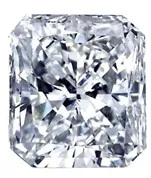
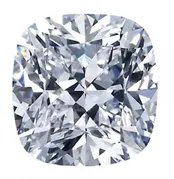
Radiant v Cushion
Asscher
The Asscher cut diamond was first produced by the Asscher Brothers in Holland in 1902, and has held its place in diamond sales throughout the years, especially increasing in popularity in 2002 after its one hundredth anniversary. This cut is referred to a square Emerald cut on a laboratory certificate and this is a great description for the shape and style of this octagonal cut. Its 58 perfectly precise facets, step cut into the stone create a “Hall of Mirrors” effect only seen in this cut stone. Almost 100 years after the original Asscher cut stone was produced, the Asscher family reinvented this cut and gave it the new name of the Royal Asscher cut, containing 74 facets. They also patented this design. With its clean balance and visual appeal this stone may appeal to someone looking for an art deco or vintage style diamond. Keep your eye on our social media platforms as we talk to Mike Asscher about the history of his company in the coming days!
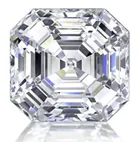
Heart
Last but not least is the heart shape diamonds. The history of the heart shape is extensive and complex, however what is clear is that is it the symbol of love the world over. It is one of the most difficult shapes to cut a diamond into, but we can all agree that it the finished product is beautiful. Due to the fact that it is so difficult to cut, it is a very rare shape to come across, so if you are lucky enough to get your hands on one, treasure it. When purchasing a heat shaped diamond it is important to remember that if it is well-cut it should be symmetrical and appear balanced and full. Heart shaped diamonds date back to the 16th century, with the first record of one given as a gift of friendship from Mary Queen of Scots to Queen Elizabeth. So whether it is a symbol of friendship or love, a heart shaped diamond, is unique, rare and a truly special choice.
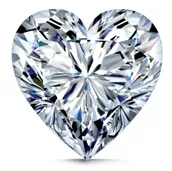
We understand that there is a lot of information in this guide, but we hope it has simplified it for you. Personal taste plays a huge factor in choosing the perfect diamond shape for you. However, if you do have any other questions or queries our diamond experts will definitely be able to guide you in the right direction and help you pick the right shape for you.
Sources :



